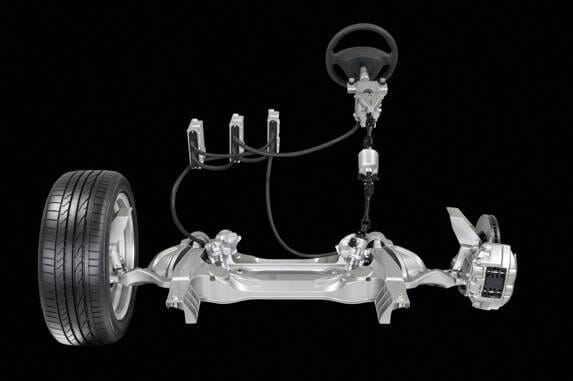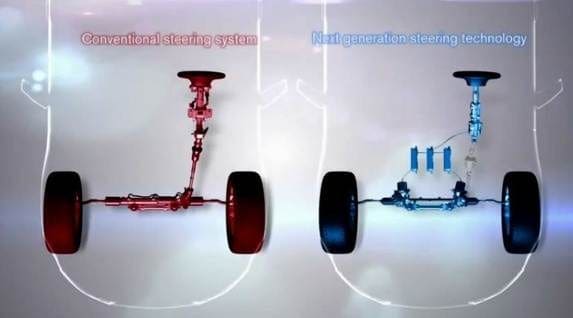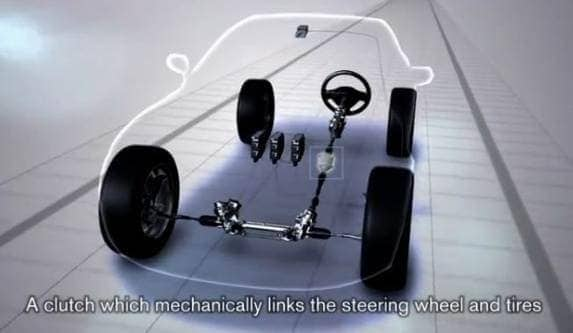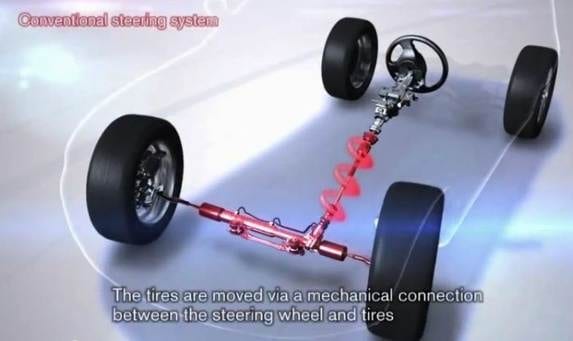Nissan Motor Company has developed a new drive-by-wire steering system that it plans to introduce on certain Infiniti vehicles within the next year. Its arrival will mark the first application of this technology on a volume production car. Unlike conventional systems – including those that feature electric power assist – this new Nissan setup is designed to allow for independent operation of the steering wheel and tires under normal operating circumstances. It functions by "reading" the driver’s intentions from the steering inputs and then controlling the vehicle’s tire movements via electronic signals sent to actuators attached to the steering rack. Nissan says the system can respond even more quickly than a mechanical counterpart and also improves the feedback and road feel while minimizing unwanted kickback and "wandering" movements caused by imperfections in the road surface.
Nissan’s new next-gen steering uses multiple ECUs (electronic control units) to serve as the basic — and redundant — fail-safe systems. In the event of multiple ECU failures or a complete shutdown of the power supply, the system also includes a backup clutch that will mechanically connect the steering wheel and tires. In case you’re concerned about the concept, keep in mind that the every large commercial and military aircraft in the world operates using redundant fly-by-wire systems and unlike the Nissan setup, those don’t incorporate any direct mechanical backups.
In addition to drive-by-wire steering, Nissan also has developed a new camera-based straight-line stability system to keep the car on a truer track. The camera, mounted above the rearview mirror, looks ahead and feeds data to the system regarding lane direction as well as any improper change in the vehicle’s travel path caused by the driver. That information is then processed and sent to multiple electronic control units that react to minimize the effects of that variance. Nissan claims the system is the first to use this approach to keep a vehicle on the straight and narrow.












